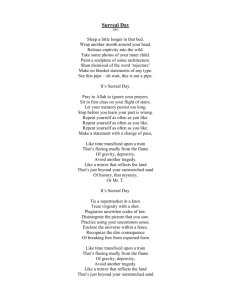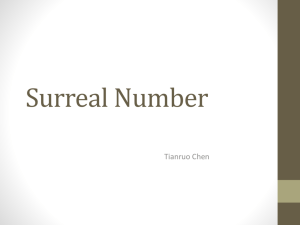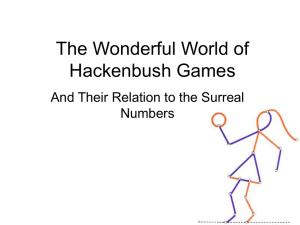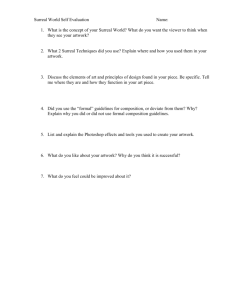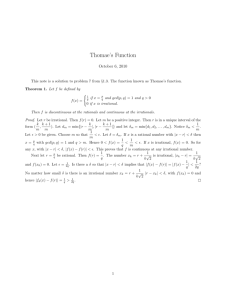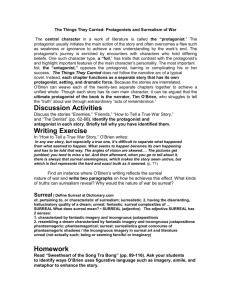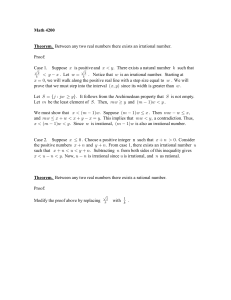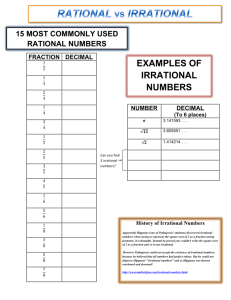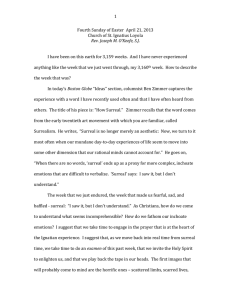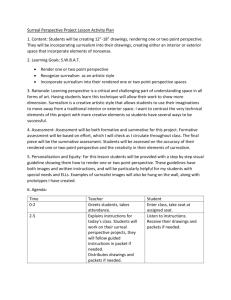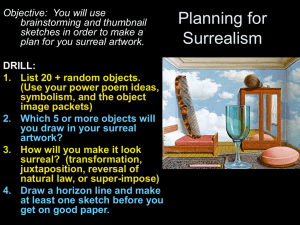Lecture 2: Irrational numbers Lecture 2: number systems
advertisement
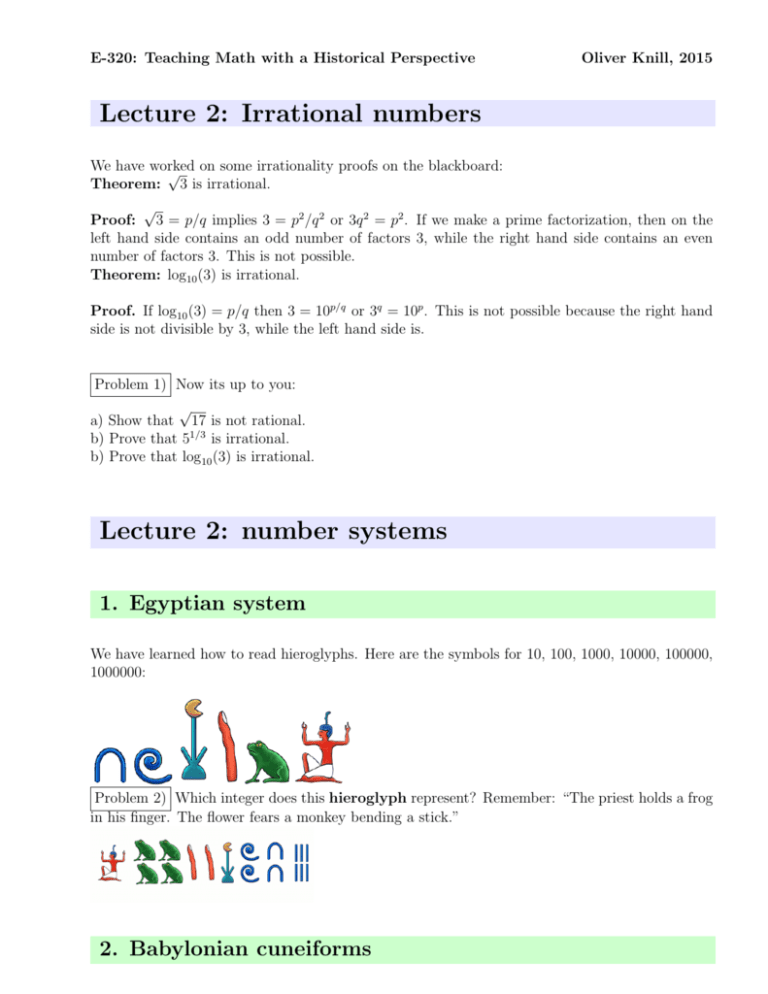
E-320: Teaching Math with a Historical Perspective Oliver Knill, 2015 Lecture 2: Irrational numbers We have worked √ on some irrationality proofs on the blackboard: Theorem: 3 is irrational. √ Proof: 3 = p/q implies 3 = p2 /q 2 or 3q 2 = p2 . If we make a prime factorization, then on the left hand side contains an odd number of factors 3, while the right hand side contains an even number of factors 3. This is not possible. Theorem: log10 (3) is irrational. Proof. If log10 (3) = p/q then 3 = 10p/q or 3q = 10p . This is not possible because the right hand side is not divisible by 3, while the left hand side is. Problem 1) Now its up to you: √ a) Show that 17 is not rational. b) Prove that 51/3 is irrational. b) Prove that log10 (3) is irrational. Lecture 2: number systems 1. Egyptian system We have learned how to read hieroglyphs. Here are the symbols for 10, 100, 1000, 10000, 100000, 1000000: Problem 2) Which integer does this hieroglyph represent? Remember: “The priest holds a frog in his finger. The flower fears a monkey bending a stick.” 2. Babylonian cuneiforms In 4000 BC, in the Mesopotamia region, cuneiform were imprinted on a wet clay tablets. An example is ”Plimpton 322”, a Clay tablet from 1800 BC. The Babylonians already contemplated the square root of 2. We have seen in the presentation the Clay tablet YBC 7289: Problem 3. How would you write the number 1000 in the hexadecimal system? Take a chewing gum, and any hard object with a corner and use to write the number into the gum. Problem 4. Clay tablet YBC 7289 is a especially interesting. We will look at the mystery in the lecture. Problem 4 is to figure out the secret of that tablet. 3. The Mayan system The Mayan system is based on 20. Here are the first 20 numbers. Note that the Mayans have independently discovered used zero and also had a place-valued system. Problem 5 . How would you write the number 401 in the Mayan system? 4. The Roman Numerals The letters I, V, X, L, C, D, M were of Etruscan origin and one speculates that the Etruscan numerals derive from tally marks or resemble hand signs. The subtractive principle like 9 = IX, 90 = XC were hardly used by the Romans. They would write V IIII, LIIII instead. Problem 6 . How would you write 129 using Roman system? 5. Surreal numbers Donald Knuth wrote a nice book called ”Surreal numbers” in which two friends find themselves stranded on an island, find a stone and some basic rules and then figure out how to build arithmetic. We have seen that when going from integers to fractions, we deal with pairs of numbers like 4/7. There is a construction of Dedekind which writes real numbers as pairs (A, B) where A, B are sets of rational numbers. When going from reals to the complex numbers one uses pairs like 4 + 7i. Having seen that the pair construction often appears, it is no surprise that also surreal numbers are constructed as pairs of sets of numbers. Numbers are pairs (L|R), where L, R are already constructed numbers or sets of such numbers. We should also have all numbers in L to be smaller than any number in R. How do we interpret (L|R)? ”It is the most natural number which has the number L on the left and the number R to the right.” Ok, lets start the construction. Start with 0 = (|) which has on both sides nothing. Now we can form −1 = (|0) and 1 = (0|). The later is the most natural number for which 0 is smaller. We can now count like 2 = (1|) and 3 = (2|) etc. What is (1|2)? It is the number 3/2. There are now new numbers like (0, 1, 2, 3, ...|) = ω which is a transfinite number as it is larger than any of the integers. Or (0|1, 1/2, 1/3, ...) = which is infinitesimal. There are explicit constructions of addition and multiplication which produce the arithmetic of surreal numbers. More general than numbers are games, which are also pairs (L|R) but where it is not necessary that all elements in L are smaller than all elements in R. Problem 7 . What is the number 14.5 in the surreal system. Answer: (14|15) Problem 8 . How would you write ω + 1 in the surreal system? Answer: (ω|)
